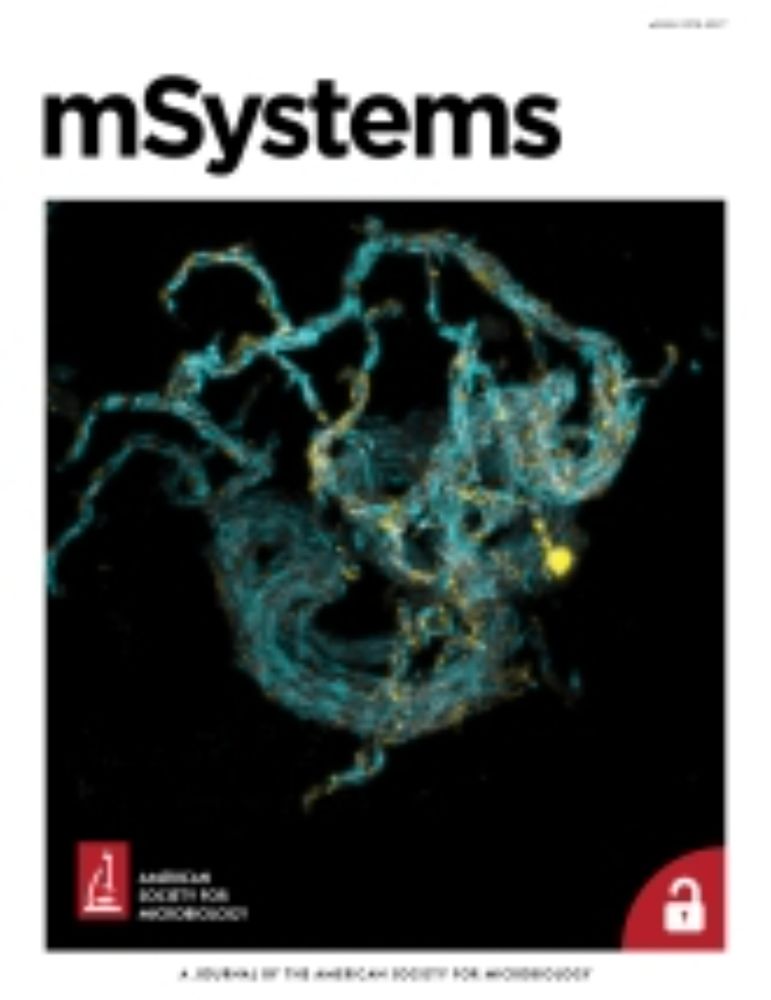Bay Area Mycological Society
The Bay Area Mycological Society is a group of mushroom enthusiasts, based in the East Bay, dedicated the art and science of wild mushrooms. We sponsor local mushroom walks, meet at UC Berkeley, and p...
It’s bad. At least a dozen people have ingested Death Cap mushrooms in the Bay Area, especially in the South Bay. We are trying to get the word out with local health and parks agencies and distributing a warning poster in Spanish. Please be careful when picking wild mushrooms. bayareamushrooms.org.
05.12.2025 23:32 — 👍 14 🔁 10 💬 0 📌 2

A group of orange mushrooms growing in grass next to a dry-stone wall.
🍄🌱 Gardens can be fungal hotspots — if we let them! In this blog for #UKFungusDay, Jassy Drakulic @jassydrak.bsky.social at The RHS explores how garden practices can encourage (or suppress) fungi & why that matters for #SoilHealth & #Biodiversity. www.ukfungusday.co.uk/fungiingardens
#Gardening
19.09.2025 12:45 — 👍 23 🔁 6 💬 1 📌 0
These are experimental cheeses that are not for sale (yet!). But this science/craft collaboration highlights how the unintentional domestication in the Cellars at Jasper Hill Farm could lead to innovation in cheese production.
Stay tuned for more fun cheese microbial ecology and evolution! 🧀
16.09.2025 15:55 — 👍 15 🔁 0 💬 0 📌 0

Wheels of a Camembert-style cheese made with a white/mutant Penicillium solitum isolate. These cheeses are placed alongside plates of Penicillium solitum and the blue cheese Bayley Hazen Blue where the fungus was originally isolated.
I am also thrilled that our work has inspired the amazing team at Jasper Hill Farm to make new cheeses (bloomy rind cheese in top of the photo) with their locally-adapted Penicillium solitum isolates. This is different from the French strains of Penicillium camemberti that are typically used.
16.09.2025 15:55 — 👍 14 🔁 1 💬 1 📌 0
Nicolas also collected very cool data showing that white mutants have a fitness advantage over the green Penicillium solitum. But this advantage is only in the dark (with all lights off). We suspect that the dark cheese cave environment leads to relaxed selection for melanin production.
16.09.2025 15:55 — 👍 12 🔁 0 💬 1 📌 0
Super grateful for the amazing team in the @kellerlab.bsky.social who helped us make alb1 knockouts that clearly demonstrated how this gene controls pigmentation in Penicillium solitum.
16.09.2025 15:55 — 👍 10 🔁 0 💬 1 📌 0

Figure showing the types and locations of mutations/insertions in the alb1 gene of Penicillium solitum
There is a lot in the paper, and too much to unpack here (read it!). But my favorite part of the story is that transposable elements that insert just upstream of alb1 are likely causing a lot of the green --> white phenotypic shifts.
16.09.2025 15:55 — 👍 18 🔁 0 💬 4 📌 0

Researchers sampling the rinds of a blue cheese in a cheese cave
And so began the highly creative and integrative PhD project by @nicolasleonlouw.bsky.social to understand if/how Penicillium solitum was evolving in this cheese cave. The frozen samples from 2016 from the wedding proposal trip were an essential microbial time capsule for this work.
16.09.2025 15:55 — 👍 14 🔁 0 💬 1 📌 0

Timeline showing the transition of rinds of Bayley Hazen Blue cheese going from green to white from 2014 to 2024
We used images from social media and other sources to piece together a timeline of the Bayley Hazen Blue green-to-white transition from ~2014 to 2024.
16.09.2025 15:55 — 👍 19 🔁 1 💬 1 📌 0

Wheels of a blue cheese with white rinds
At the same time, we had been noticing (with lots of help from the amazing team of cheesemakers and affineurs!) that in the Jasper Hill cheese caves, the rinds of Bayley Hazen Blue were turning white!
16.09.2025 15:55 — 👍 13 🔁 0 💬 1 📌 0

New colours for old in the blue-cheese fungus Penicillium roqueforti - npj Science of Food
npj Science of Food - New colours for old in the blue-cheese fungus Penicillium roqueforti
Alb1 is the first step in melanin biosynthesis for many fungi. When you alter or completely inactivate the alb1 gene in many fungi, you get white mutants, as Paul Dyer's group has previously demonstrated with Penicillium roqueforti. www.nature.com/articles/s41...
16.09.2025 15:55 — 👍 13 🔁 0 💬 1 📌 0
A bright undergrad (Jackson Larlee) in a lab course that Nicolas and I were teaching noticed that in some white strains, there were mutations in a polyketide synthase gene. The genome was poorly annotated (at the time), but Jackson figured out that the gene was like alb1.
16.09.2025 15:55 — 👍 14 🔁 0 💬 1 📌 0

In some cases when you passaged the green Penicillium solitum on cheese curd agar in the lab, it would change from green to white over very short periods of time.
16.09.2025 15:55 — 👍 17 🔁 0 💬 1 📌 0
Flash forward to 2023 when @nicolasleonlouw.bsky.social was doing some experimental evolution in the lab with the fungus Penicillium solitum. It was isolated from the rind of Bayley Hazen Blue (was responsible for the green rind in 2016) and the fungus was doing some weird trait switching.
16.09.2025 15:55 — 👍 14 🔁 0 💬 1 📌 0

Wheels of the blue cheese Bayley Hazen Blue with a green fungus on the surface

Rachel said YES to Charlie's marriage proposal. And we collected a bunch of samples from the rinds of Bayley Hazen Blue cheese. At the time, the rinds of the cheese were bright green. I put the 2016 green rind samples in the -80 freezer and never tossed them out...
16.09.2025 15:55 — 👍 16 🔁 0 💬 1 📌 1
In 2016, I was part of a scheme to get Rachel Dutton (my post-doc advisor) up to the cheese caves at Jasper Hill Farm in Vermont. Her boyfriend (Charlie Kalish) wanted to propose to her where they met. I told Rachel we had important cheese rind samples to collect. She went along with it!
16.09.2025 15:55 — 👍 13 🔁 0 💬 1 📌 0

Cover of the BMS's Fungal Ecology journal
📣 Call for papers! Special issue of #FungalEcology on “Fungal conservation: from knowledge to actions” co-edited by Susana C. Gonçalves @cfemycolab.bsky.social & Jonathan Cazabonne @jonathancazabonne.bsky.social. Deadline for manuscripts: 31 Jan 2026. Find out more: www.linkedin.com/company/brit...
28.08.2025 16:49 — 👍 27 🔁 14 💬 1 📌 0

Thrilled to announce that the special issue on fungal #conservation that @cfemycolab.bsky.social and I are co-editing for the @britmycolsoc.org.uk c.org.uk journal Fungal Ecology is open for submissions!
www.sciencedirect.com/special-issu...
25.08.2025 16:08 — 👍 20 🔁 13 💬 1 📌 0
We are on the lookout for postdocs for two different projects at the intersection of ecology, evolution, and the human microbiome.
See thread for more information and reach out!
22.07.2025 19:34 — 👍 104 🔁 115 💬 2 📌 1
Huge thanks to the amazing team at @currentbiology.bsky.social for highlighting fungi in this special issue. Many excellent reviews and perspectives from so many mycological heroes. Lots of great material to use in teaching/outreach. 🍄
09.06.2025 21:59 — 👍 35 🔁 9 💬 0 📌 0
We are hiring a postdoctoral scholar to join us in the sometime in the next ~6 months. oliveriolab.org with a focus on microbial eukaryotes in extreme environments.
Please email w/CV if you'd like to chat. Official ad soon.
#MicroSky #MicrobiomeSky #ProtistsOnSky
25.03.2025 21:04 — 👍 23 🔁 19 💬 1 📌 2

Schematic of lab and field experiments testing for yeast fitness with and without killer viruses. Panel A depicts a classical fitness assay in which a yeast with a virus (or cured of the virus) is cultured with a viral toxin-resistant reference strain and the number of doublings is compared between the two yeasts. Panel B diagrams field chambers made of 12-ml tubes in which a membrane holding yeast cells lines the mouth of the tube; the tube is then buried next to a tree. Panel C depicts a field experiment with the chambers. Yeasts hosting (or cured of) viruses are mixed with virus toxin-resistant reference cells, put onto chamber membranes, and incubated in soil for fifteen days. The relative ratios of tested and reference strains are then used as a proxy for fitness.
Check out my latest paper on fitness costs and benefits of hosting a killer virus if you're a yeast in the forest!
www.sciencedirect.com/science/arti...
08.03.2025 18:32 — 👍 43 🔁 11 💬 2 📌 1

Get in dorks, we're going protesting!
STAND UP FOR SCIENCE WITH US ON MARCH 7TH, 2025
WASHINGTON DC AND EVERY STATE CAPITOL
Because science is for everyone!
Find us at standupforscience2025.org
#standupforscience2025 #scienceforall #sciencenotsilence
10.02.2025 23:40 — 👍 244 🔁 140 💬 11 📌 14
Get in Dorks, we are going protesting.
STAND UP FOR SCIENCE. MARCH 7th 12-4pm. DC AND YOUR STATE CAPITALS.
More information to come.
09.02.2025 14:23 — 👍 854 🔁 432 💬 41 📌 38
Intraspecies associations from strain-rich metagenome samples https://www.biorxiv.org/content/10.1101/2025.02.07.636498v1
08.02.2025 21:20 — 👍 8 🔁 3 💬 0 📌 0

a woman in a black and white jacket is sitting at a table in a diner .
Alt: a woman in a black and white jacket is sitting at a table in a diner saying "There, I said it."
And Academic T&P committees, maybe take a beat & consider how the continuous & unsustainable push for CV conspicuous production has been a competitive inhibitor of scientists & scholars being engaged in their communities in meaningful ways as a bulwark to the shitstorm happening now.
08.02.2025 16:52 — 👍 186 🔁 48 💬 5 📌 4
Microbiologist & phage phanatic! Enthusiastic explorer of microbial genomes
PI at the Wadsworth Center, New York State Department of Health
Assist Prof @albany.edu
Currently obsessed with plasmid-dependent phage
www.wadsworth.org/research/laboratories/owen
We are interested in fungi and their interactions. Biodiversity monitoring, ecology, phylogenetics. PI @dhaelewa.bsky.social. Based at the Biology Centre CAS. 🍄 #mycology #parasitology #teamlaboul
📍České Budějovice, Czechia
Science journalist, humor writer and aspiring cephalopod. Author of THE CREATURES' GUIDE TO CARING, coming in 2026.
elizabethgpreston.com
elizabethgpreston.substack.com
Official account of Science Vs!
We're a science podcast that pits facts against everything else.
Made by Wendy Zukerman, Rose Rimler, Meryl Horn, Michelle Dang, Ekedi Fausther-Keeys, Blythe Terrell, Bobby Lord & independent fact checkers
Research fellow @UoB, interested in all things fungi and plants
PhD candidate in the @talbotlabtsl.bsky.social group. Focusing on protein design and effector biology in Magnaporthe oryzae.
www.ahbucknell.com
Ph.D student in mycology and ecosystem forest management at the Université du Québec en Abitibi-Témiscamingue | Molecular ecology, taxonomy, conservation | Symbiosis and Laboulbeniomycetes enthusiast #TeamLaboul | Co-founder of @mycosphaera.bsky.social🍄
Microbiologist 🦠 Chief editor at Nature Microbiology📚
Views my own
A @cdnsciencepub.com journal reporting peer-reviewed research from all areas of microbiology, from molecular biology to microbial ecology.
Helping you 🫵 make sense of higher education 🎓 Follow for the latest news, opinions, jobs and resources.
Visit insidehighered.com for more.
I’m a plant developmental geneticist who loves plants, evolution, teaching and hiking with my dogs.
Engineering non-model microbes @ Cultivarium | soft spot for microbiomes and DIY tech | he/him
I make Dad jokes on NPR and also write books and other things.
science journalist | good physics, bad physics, and sometimes ugly physics
Signal: dgaristo.72
Email: digaristo@gmail.com
Fungal research, education, recording and conservation. https://www.britmycolsoc.org.uk/
> Supporting & publishing mycological research & field studies
> Share your finds & get help with fungus ID: on.fb.me/1FF9eI
🍄#UKFungusDay - 10 October 2026🍄
UC Davis PhD Biochemist (He/Him)
Passionate about all forms of fungi and fermentation 🍺🍷🥖🧀🍄🟫🫘🥬🌶️
Presenting emotionally engaging educational mushroom content 🍄😍🥺😳🤯😱🫨😈
Cantabridgian Gone Californian 📍Napa
Mildly Canadian 🇨🇦
🔗 https://fascinatedbyfungi.me/
Disease Ecology. Biodiversity. Global Change.
PI of the Disease Ecology and Diversity Lab at Oregon State University https://agsci-labs.oregonstate.edu/diseaseecology/
Citizen, Dad, Husband, Scientist, program officer at NSF, former biology professor and sports “expert”. Views are mine and do not represent my employer. Returning to social media on my personal time .
HHMI Hanna Gray Fellow @DukeU | He Lab | Plant-microbiome-pathogen interactions | PhD from @Dartmouth in @geiselbiofilm lab | @GrinnellCollege alum '15


















